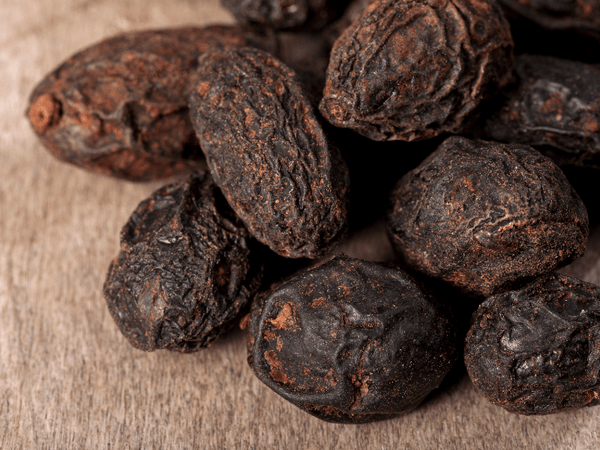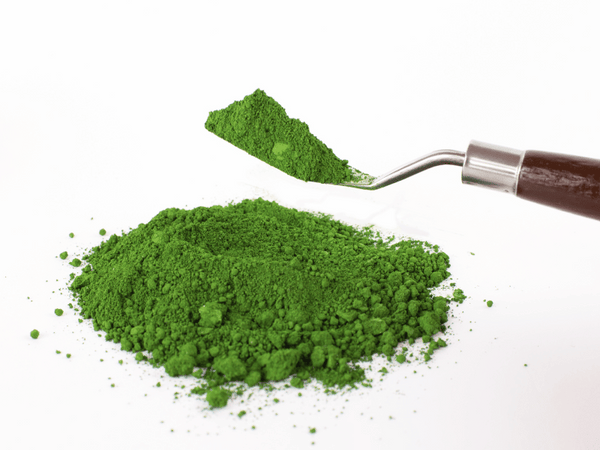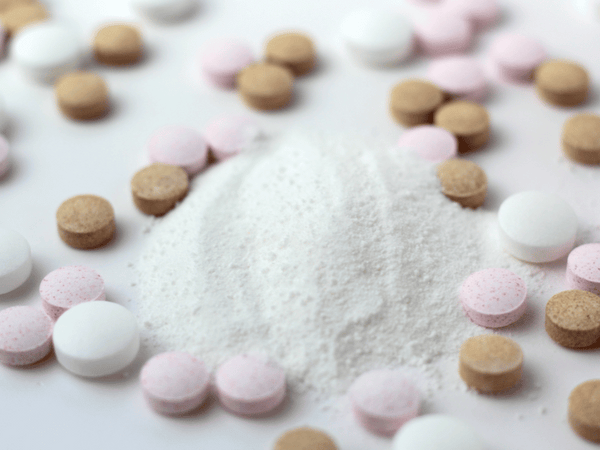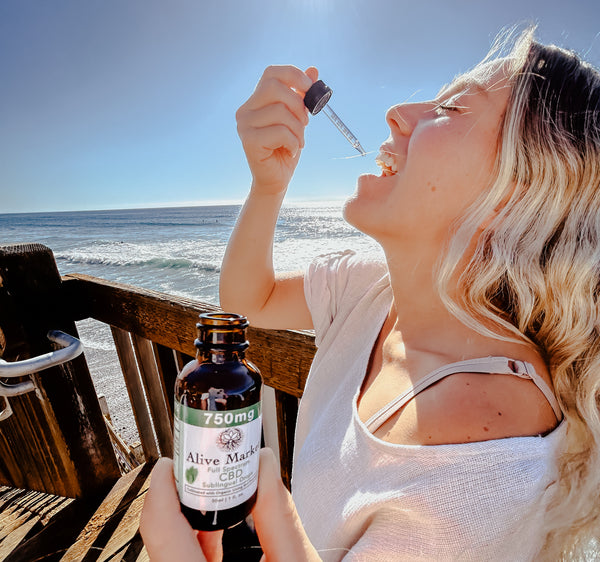Testosterone, a steroid hormone often associated with masculinity, plays a crucial role in both male and female bodies. While women naturally produce lower levels of testosterone compared to men, its presence is still vital for various physiological functions, including muscle mass maintenance, bone density regulation, facial hair growth, body hair growth, and libido. However, when testosterone levels in women become too elevated and go beyond the normal range, it can lead to a range of distressing symptoms and health complications.
In this comprehensive guide, we delve into the topic of how to lower testosterone levels in women. We'll explore the reasons behind elevated testosterone, the symptoms associated with it, and, most importantly, practical strategies and lifestyle changes that can help you decrease high testosterone* levels and restore hormonal balance naturally.
High testosterone levels in women are often a consequence of underlying health conditions such as polycystic ovary syndrome (PCOS), adrenal disorders, or medication side effects. Additionally, lifestyle factors including diet, exercise habits, stress levels, and sleep patterns, can all influence sex hormone levels and produce high levels of testosterone in women without too much testosterone.
Understanding the intricacies of testosterone regulation in the female body is crucial for effectively managing its levels. By making informed choices and implementing targeted interventions, women can take proactive steps toward optimizing their hormonal health and overall well-being.
Join us on this journey as we explore evidence-based recommendations, natural remedies, and medical interventions aimed at supporting women with high testosterone's health in their quest to achieve hormonal harmony and vitality. Whether you're seeking relief from symptoms associated with high testosterone in women or simply striving for optimal health, this guide offers practical insights and actionable strategies to empower you on your wellness journey.
Understanding Testosterone in Women

While testosterone is often among male sex hormones associated with male characteristics, it is also present in women, albeit in smaller quantities. In females, testosterone is primarily produced in the ovaries and adrenal glands, contributing to various physiological functions of female sex hormone, such as maintaining both muscle mass and bone mass, regulating libido, and supporting overall vitality.
Normal testosterone levels in women typically range between 15 and 70 nanograms per deciliter (ng/dL), although these values may vary slightly depending on factors such female hormones such as age and individual health status. However, when testosterone levels exceed the upper limit of this range, it can lead to a condition known as hyperandrogenism, characterized by an excess of male hormones in the female body.
Symptoms of High Testosterone in Women
Elevated testosterone levels in women can manifest in a variety of ways, ranging from mild to severe.
Common signs of high testosterone in women may include:
Hirsutism: Excessive excess facial hair or body, excessive female hair growth, or unwanted hair growth in areas typically associated with male pattern hair growth, such as the face, chest, and back.
Acne: Increased oil production and acne formation, particularly along the jawline and chin.
Hair Loss: Thinning of the scalp hair or male-pattern baldness.
Irregular Menstrual Cycles: Changes in the menstrual cycle patterns, including irregular periods or the absence of menstruation (amenorrhea).
Weight Gain: Difficulty losing weight or unexplained weight gain, particularly around the abdomen.
Mood Changes: Mood swings, irritability, or symptoms of depression and anxiety.
Decreased Libido: Loss of interest in sexual activity or diminished libido.
Causes of Elevated Testosterone in Women
Several factors can contribute to high testosterone levels in women, including:
Polycystic Ovary Syndrome (PCOS): PCOS, or polycystic ovarian syndrome, is a common hormonal condition marked by high testosterone and androgen levels, ovarian cysts, and irregular menstruation periods.
Adrenal Disorders: Conditions affecting the adrenal glands, such as congenital adrenal hyperplasia (CAH) or adrenal tumors, can lead to excess production of androgens. Congenital adrenal hyperplasia causes the body to produce too much testosterone, resulting in infertility and virilization.
Medication Side Effects: Certain medications, such as sex hormones such as anabolic steroids, corticosteroids, or hormonal contraceptives containing high doses of androgens, may contribute to elevated testosterone levels.
Lifestyle Factors: Poor dietary choices, sedentary lifestyle, chronic stress, and inadequate sleep can disrupt male sex hormone and balance and contribute to hormonal imbalances, including high testosterone levels.
Understanding the underlying causes of elevated testosterone is essential for effective management and treatment of high testosterone symptoms. By addressing the root cause of high testosterone symptoms and implementing targeted interventions, women experiencing high testosterone symptoms can take proactive steps toward restoring hormonal balance and alleviating associated symptoms.
Lifestyle Changes to Lower Testosterone
Addressing high testosterone levels in women often begins with making lifestyle modifications aimed at promoting hormonal balance and overall well-being. By adopting healthy habits and incorporating targeted interventions into their daily lives, women can take proactive steps toward naturally lowering testosterone levels.
Here are some practical strategies on how to lower testosterone in women to consider:
Dietary Modifications
Emphasize Whole Foods: Incorporate a diet rich in whole, unprocessed foods such as fruits, vegetables, whole grains, lean proteins, and healthy fats. These foods provide essential nutrients and antioxidants that support hormone balance and overall health.
Limit Sugar and Refined Carbohydrates: Minimize consumption of sugary foods and beverages, as well as refined carbohydrates like white bread, pasta, and pastries, which can spike blood sugar and insulin resistance and contribute to hormonal imbalances.
Include Hormone-Balancing Foods: Incorporate foods known for their hormone-balancing properties, such as flaxseeds, which contain lignans that may help regulate estrogen levels, and spearmint tea, which has been shown to reduce androgen levels in women with PCOS.
Moderate Alcohol and Caffeine: Limit alcohol consumption, as excessive alcohol intake can disrupt hormone balance. Similarly, moderate caffeine intake is important, as caffeine may stimulate the adrenal glands and contribute to elevated cortisol levels, which can impact hormone regulation. You can swap your cup of coffee for green tea. Green tea increases Sex Hormone Binding Globulin (SHBG), a protein that grabs onto excess testosterone.
Exercise and Weight Management
Engage in Regular Physical Activity: Incorporate regular exercise into your routine, including both aerobic activities (such as walking, jogging, or cycling) and strength training exercises. Exercise helps regulate hormone levels, improve insulin sensitivity, lose weight, and promote overall well-being.
Maintain a Healthy Weight: Aim to your body weight and achieve and maintain a healthy weight through a combination of a balanced diet and regular exercise. Excess body fat, especially around the abdomen, can contribute to hormonal imbalances and exacerbate symptoms associated with high testosterone levels.
Stress Reduction Techniques
Practice Stress Management: Implement stress-reducing techniques such as meditation, deep breathing exercises, yoga, tai chi, or progressive muscle relaxation. Chronic stress can lead to increased cortisol production, which may disrupt hormone balance and contribute to elevated testosterone levels.
Prioritize Self-Care: Make time for activities that promote relaxation and well-being, such as spending time in nature, connecting with loved ones, or engaging in hobbies. Taking care of your mental and emotional health is essential for hormone balance.
Sleep Hygiene
Establish a Consistent Sleep Schedule: Aim for 7-9 hours of quality sleep each night and establish a consistent sleep schedule by going to bed and waking up at the same time each day. Adequate sleep is very important for hormone regulation and overall health.
Create a Relaxing Bedtime Routine: Create a calming bedtime routine to signal to your body that it's time to wind down. This may include activities such as taking a warm bath, reading, or practicing relaxation techniques.
Natural Remedies and Supplements
In addition to lifestyle modifications, certain natural remedies and supplements may offer further support in lowering testosterone levels and promoting hormonal balance in women. While these interventions may not be a substitute for medical treatment, they can complement lifestyle changes and provide additional benefits blocking testosterone alone.
Here are some natural remedies and supplements to consider to decrease testosterone levels:
Spearmint
Herbal Tea: Spearmint tea has been studied for its potential to reduce androgen levels in women with conditions such as PCOS. Drinking spearmint tea regularly may help lower testosterone levels and alleviate symptoms associated with high androgens.
CBD Oil
Cannabinoid Support: CBD oil, derived from the cannabis plant, has gained attention for its potential therapeutic effects on hormone balance. While research specifically on its impact on testosterone levels in women is limited, CBD oil is known for its anti-inflammatory and stress-reducing properties, which may indirectly support hormone regulation.
Flaxseed
Rich in Lignans: Flaxseeds are rich in lignans, plant compounds that have been shown to possess estrogenic properties and may help regulate estrogen levels in the body. Incorporating ground flaxseeds into your diet may support hormone balance.
Saw Palmetto

Natural Anti-Androgen: Saw palmetto is a plant extract that has traditionally been used to support prostate health in men. However, it may also have anti-androgenic effects in women, helping to reduce testosterone levels and alleviate symptoms such as hirsutism and acne.
Licorice Root
Hormonal Regulation: Licorice root contains compounds that may help regulate hormone levels by inhibiting the enzyme responsible for converting testosterone into its more potent form, dihydrotestosterone (DHT). Consuming licorice root in moderate amounts or as a supplement may support hormone balance.
Chromium

Insulin Sensitivity: Chromium is a mineral that plays a role in insulin sensitivity, androgen hormones, and glucose metabolism. Supplementing with chromium picolinate may help improve insulin sensitivity and reduce androgen levels in women with insulin resistance associated with conditions like PCOS.
Vitamin D
Hormone Regulation: Vitamin D deficiency has been associated with hormonal imbalances, including elevated testosterone levels in women. Ensuring adequate vitamin D intake through sunlight exposure, dietary sources, or supplementation may help support hormone balance.
Inositol

Insulin Sensitivity: Inositol, a B-vitamin-like compound, has been shown to improve insulin sensitivity and ovarian function in women with PCOS. Supplementing with inositol may help lower testosterone levels and improve symptoms associated with high androgens.
Evening Primrose Oil
Hormone Regulation: Evening primrose oil contains gamma-linolenic acid (GLA), an omega-6 fatty acid that may help regulate hormone levels and reduce inflammation. While research on its effectiveness in lowering testosterone levels is limited, some women find it beneficial for hormonal balance.
Medical Interventions and Treatment Options
While lifestyle changes and natural remedies can be effective in managing high testosterone levels in some cases, there are situations where medical interventions may be necessary to achieve optimal hormone balance. Consulting with a healthcare provider is essential to determining the most appropriate treatment approach based on individual needs and circumstances. Here are some medical interventions and treatment options that may be considered:
Oral Contraceptives
Hormonal Regulation: Birth control pills containing estrogen and progestin can help regulate menstrual cycles and hormone levels in women with conditions such as PCOS. Oral contraceptives may be prescribed to help lower testosterone levels and alleviate associated symptoms such as hirsutism and acne.
Anti-Androgen Medications
Androgen Blockers: Anti-androgen medications such as spironolactone or cyproterone acetate may be prescribed to treat high testosterone and block the effects of androgens on target tissues. These medications can help reduce symptoms of high testosterone, including hirsutism, acne, and even facial hair growth or loss.
Metformin
Insulin Sensitizer: Metformin, a medication commonly used to improve insulin resistance and treat type 2 diabetes, may also be prescribed off-label to improve insulin sensitivity and regulate menstrual cycles in women with PCOS. By addressing insulin resistance, metformin can help lower testosterone levels each menstrual cycle and improve symptoms associated with high androgens.
Gonadotropin-Releasing Hormone (GnRH) Agonists
Hormonal Suppression: GnRH agonists such as leuprolide acetate or goserelin acetate work by suppressing the release of gonadotropin-releasing hormone, which in turn reduces the production of testosterone by the ovaries and adrenal glands. These medications may be used in certain cases to lower testosterone levels temporarily.
Ovarian Surgery
Oophorectomy: In cases of severe androgen excess associated with conditions such as ovarian hyperthecosis or androgen-secreting tumors, surgical removal of the ovaries (oophorectomy) may be considered as a last resort to reduce excess testosterone production.
Laser Therapy or Electrolysis
Hair Removal: For women experiencing hirsutism due to excess body hair or excessive hair growth due to high testosterone levels, laser therapy or electrolysis may be recommended to remove unwanted facial and body hair either permanently or reduce its growth. These procedures can help improve cosmetic concerns associated with excess or unwanted hair growth.
Conclusion
Navigating high testosterone levels in a woman's health can present challenges, but with the right knowledge and strategies, it's possible to achieve hormonal balance and improve overall well-being. From lifestyle modifications to natural remedies and medical interventions, there are various approaches available to support hormone regulation and alleviate symptoms associated with excess testosterone and androgens.
By adopting a holistic approach free of excess testosterone, that encompasses dietary changes, regular exercise, stress management techniques, and adequate sleep, women can take proactive steps toward lowering testosterone levels naturally. These lifestyle modifications not only promote hormone balance and healthy testosterone levels but also contribute to overall health and vitality.
Incorporating natural remedies and supplements, such as spearmint tea, flaxseed, and saw palmetto, can further complement lifestyle changes and provide additional support for hormone regulation. However, it's essential to consult with a healthcare provider before starting any new supplements, especially if you have underlying health conditions or are taking medications.
For some women, medical interventions such as oral contraceptives, anti-androgen medications, or insulin sensitizers may be necessary to achieve optimal hormone balance. Working closely with a healthcare provider ensures that treatment plans are tailored to individual needs and goals, with careful consideration of potential risks and benefits.
Ultimately, the journey to hormonal harmony is unique for each woman, and there is no one-size-fits-all approach. It's essential to listen to your body, prioritize self-care, and seek guidance from healthcare professionals who can provide personalized support and guidance along the way.
By taking proactive steps to address high testosterone levels, women can reclaim control of their hormone health and enjoy improved quality of life. Whether you're seeking relief from symptoms or striving for optimal wellness, remember that you're not alone on this journey, and support is available to help you thrive.


